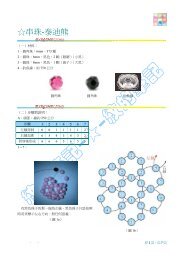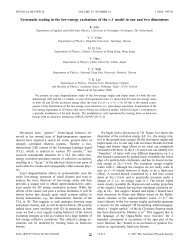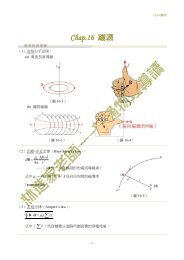Chapter 22 Materials Selection and Design Considerations
Chapter 22 Materials Selection and Design Considerations
Chapter 22 Materials Selection and Design Considerations
Create successful ePaper yourself
Turn your PDF publications into a flip-book with our unique Google optimized e-Paper software.
(a) (b)<br />
<strong>22</strong>.19 Package Encapsulation • W125<br />
Figure <strong>22</strong>.32 Scanning electron micrographs of (a) a ball bond ( 475�),<br />
<strong>and</strong> (b) a wedge<br />
bond ( 275�).<br />
(Photographs courtesy of National Semiconductor Corporation.)<br />
Unfortunately, the bending motion of wedge-bonded wires is restricted to a single<br />
direction. Gold wires may also be bonded using wedge microjoints. Figure <strong>22</strong>.32b<br />
is a scanning electron micrograph of a wedge microjoint.<br />
There are other considerations relative to wire bonding that deserve mentioning.<br />
Microjunction alloy combinations that form intermetallic phases should be<br />
avoided because these phases are normally brittle <strong>and</strong> yield microjoints lacking<br />
long-term mechanical stability. For example, Au <strong>and</strong> Al may react at elevated temperatures<br />
to form AuAl 2, termed the “purple plague”; this compound is not only<br />
very brittle (<strong>and</strong> purple), but also highly electrically resistive. Furthermore, mechanical<br />
integrity at each microjoint is important to (1) withst<strong>and</strong> vibrations that<br />
the package may experience, <strong>and</strong> (2) survive thermal stresses that are generated as<br />
the packaging materials change temperature.<br />
<strong>22</strong>.19 PACKAGE ENCAPSULATION<br />
The microelectronic package, as now constituted, must be provided some type of<br />
protection from corrosion, contamination, <strong>and</strong> damage during h<strong>and</strong>ling <strong>and</strong> while<br />
in service. The wire interconnection microjunctions are extremely fragile <strong>and</strong> may<br />
be easily damaged. Especially vulnerable to corrosion are the narrow Al circuit<br />
paths that have been metallized onto the surface of the IC chip; even the slightest<br />
corrosion of these elements will impair the operation of the chip. These Almetallized<br />
layers experience corrosion when atmospheric moisture in which even<br />
minute concentrations of ionic contaminants are dissolved (especially chlorine <strong>and</strong><br />
phosphorus) condenses on the chip surface. Furthermore, the corrosive reactions<br />
are accelerated as a consequence of electric currents that pass through these circuit<br />
paths. In addition, any sodium (as Na � ) that gets on the chip surface will eventually<br />
diffuse into the chip <strong>and</strong> destroy its operation.

















